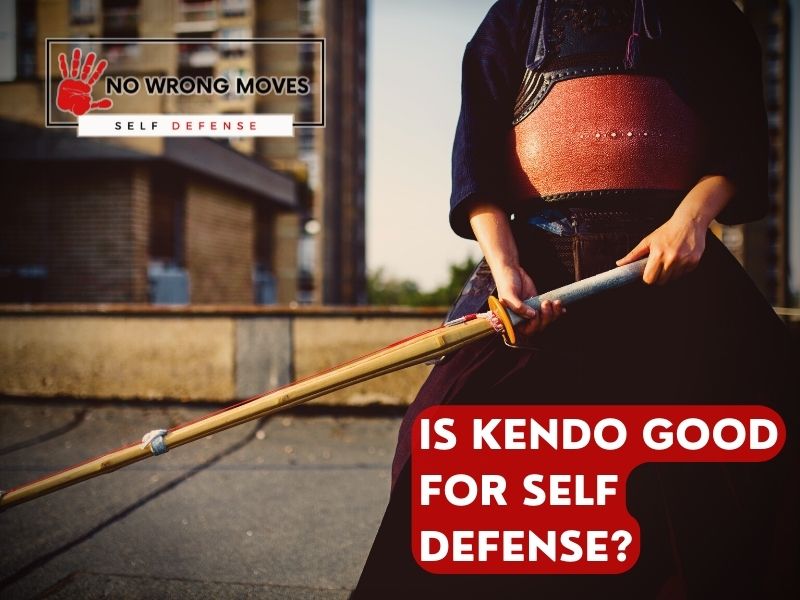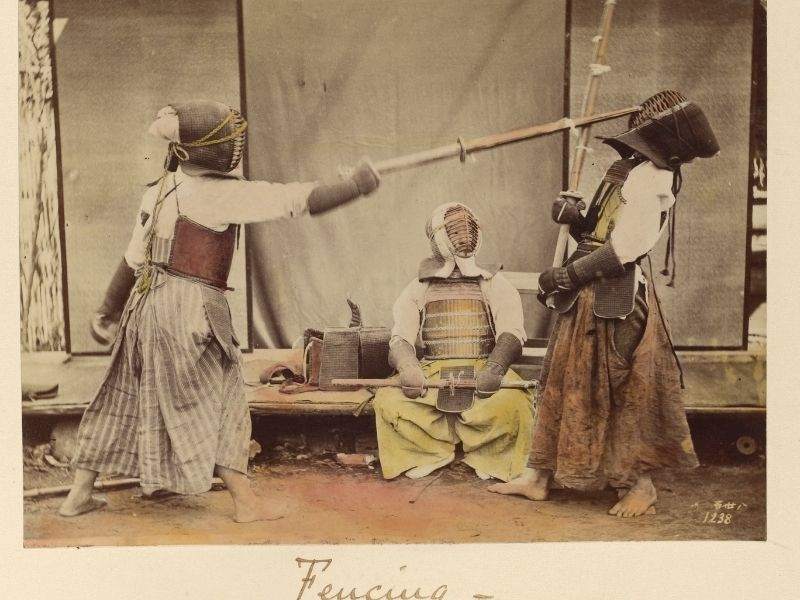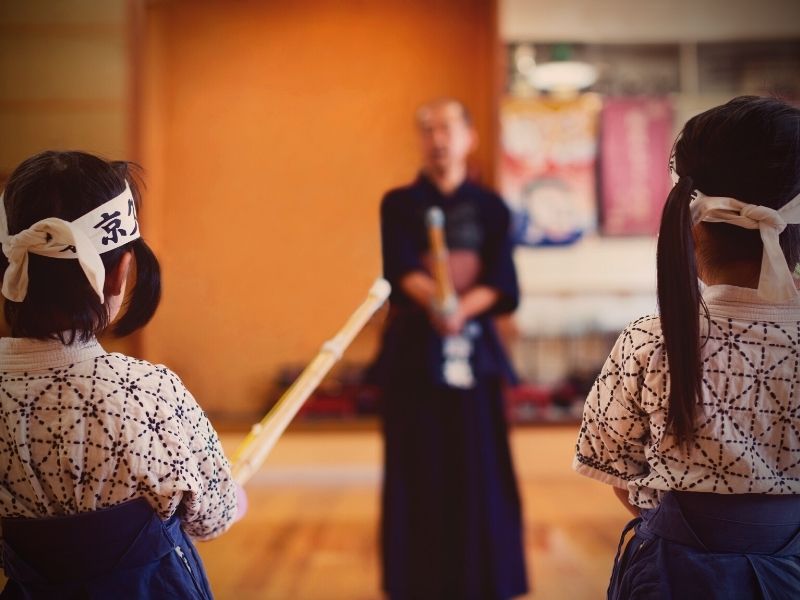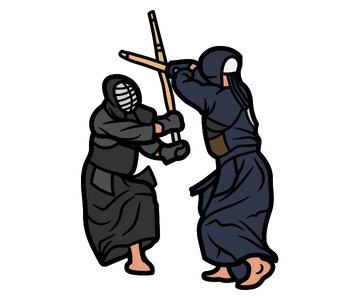
- The History of Kendo
- How Effective Is Kendo For Self Defense?
- How Effective Is Kendo In A Street Fight?
- What Are The Benefits Of Training In A Martial Art For Self-Defense?
- Why Choose To Learn Kendo Over Another Discipline?
- The Wrap-Up
- FAQs To Consider When Choosing A Martial Arts Discipline For Self-Defense
If you're considering learning Kendo for self defense, you might be wondering how effective it really is. Kendo is a martial art with roots in feudal Japan and is centered around sword fighting.
In this article, we'll explore the history of Kendo and evaluate its effectiveness as a form of self-defense.
So let's get into it! Let's explore kendo for self-defense in the real world and see if this is a discipline worth learning.
The History of Kendo

Kendo is a martial art that traces its origins back to the samurai of feudal Japan. The word "kendo" is composed of two kanji characters: "ken" meaning sword, and "do" meaning way or path.
Thus, kendo can be translated as "the way of the sword."
Kendo is rooted in the traditional techniques of Japanese swordsmanship known as kenjutsu. The origins of kendo can be traced back to the Heian period, when samurai developed skills such as kenpo and kenjutsu to protect themselves during battles.
During the Kamakura period, sword fencing, along with horse riding and archery, were the main martial pursuits of military clans. This era saw the emergence of many schools of swordsmanship, which eventually established Kendo training schools that continue to this day.
During the Edo period, the frequency of battles decreased, and society enjoyed a time of peace. This change led to a transformation in the practice of swordsmanship, shifting from killing opponents to saving lives and training the mind as part of character development.
This transformation forms the foundation of the kendo practiced today.
In the 18th century, practice armor and the shinai, a bamboo sword, were introduced to allow realistic fencing without the risk of injury. This marked a turning point for the sport, as it became accessible to more people.
After World War II, kendo was banned under the Occupation of the Allied Forces. However, the All Japan Kendo Federation was established in 1952, leading to the formal resurrection of kendo.
The International Kendo Federation was founded in 1970, further spreading the popularity of the martial art outside Japan. Today, kendo is widely practiced not only in Japan, but also in countries such as the United States, Canada, Great Britain, and Australia.
The ultimate goal of Kendo, as stated by the All Japan Kendo Federation, is "to discipline the human character through the application of the principles of the katana (the Japanese standard two-handed sword)."
This goal highlights the importance of character development and discipline, both of which are core tenets of kendo.
How Effective Is Kendo For Self Defense?

Kendo, a modern Japanese martial art, offers valuable lessons in self-defense as it trains individuals in the use of weapons such as a sword, staff, or stick.
This art is rooted in the ancient fighting styles of the samurai, developed to quickly and silently take down their opponents with ruthless efficiency.
In Kendo, practitioners strive to achieve a state of mushin or an empty mind, allowing them to instinctively respond to their opponent's moves without any conscious thought.
Despite its origins, Kendo has evolved into a sport with modern competitive rules. While Kendo can be an effective way to manage distance, it may not be as effective against smaller blades.
How Effective Is Kendo In A Street Fight?
I think there are some Kendo techniques that could be effective in a street fight. I know that Kendo practitioners train with wooden swords, and I think the basic principles could be applied to other weapons as well.

For example, I know that one of the key principles of Kendo is to always be on the offensive. I think this could be effective in a street fight because it would surprise your opponent and keep them off balance.
I also know that Kendo practitioners are trained to strike quickly and decisively. This could be useful in a street fight because it would minimize the damage you take and give you a better chance of winning.
Overall, I think Kendo could be effective in a street fight if you know how to apply its principles. But you might be better off choosing a more aggressive discipline.
What Are The Benefits Of Training In A Martial Art For Self-Defense?
There are so many benefits to training in a martial art for self-defense. First, it is a good workout. You will get cardio and strength training while learning how to defend yourself.
Second, it can relieve stress. Learning how to defend yourself can give you a sense of empowerment and control.
Third, it is legal self-defense. If you are attacked, you can use your martial arts training to defend yourself without breaking the law.
Fourth, it can help you stay safe. Knowing how to defend yourself can help you avoid dangerous situations and protect yourself if you are attacked.
Finally, it is a new skill. Learning a new skill can be fun and rewarding. It can also give you confidence and a sense of accomplishment.
Whether you want to get in shape, relieve stress, or learn how to defend yourself, training in a martial art can be a great choice.
Why Choose To Learn Kendo Over Another Discipline?

Kendo is an excellent choice for a martial art because it is not only physically demanding, but it also teaches mental discipline and focus.
In order to progress in kendo, one must learn to control their mind and body as one unit. The principles of kendo can be applied to other areas of life as well, such as work and school.
Kendo is also a good choice because it can be practiced by people of all ages. Young children can start learning the basics, and adults can continue to develop their skills and techniques.
The equipment required for kendo is also relatively inexpensive, so it is a good option for those who are on a budget.
The Wrap-Up
So to sum things up, Kendo can be an effective form of self-defense in the right circumstances. Its roots in samurai fighting styles make it a lethal martial art that teaches how to use a sword or any striking object such as a staff or stick.
Kendo practitioners strive to achieve a state of mushin, or an empty mind, allowing them to respond instinctively to an opponent's moves.
But regardless, it's still worth noting that Kendo is a sport and has been adjusted for modern competition rules. While it can be useful for distance management, Kendo may not be as effective against smaller blades.
As with any martial art, Kendo should be practiced with caution and only used in self-defense situations when necessary. At the end of it all, Kendo is a fascinating and rewarding martial art that offers much more than just self-defense skills.
Check out more about Kendo here!
FAQs To Consider When Choosing A Martial Arts Discipline For Self-Defense
What Are the Key Factors to Consider when Choosing a Martial Arts Discipline for Self-Defense?
One of the most important factors to consider when choosing a martial arts discipline for self-defense is the style of fighting. For example, disciplines like karate and taekwondo emphasize striking, while Brazilian Jiu-Jitsu and Judo focus on grappling.
Another key factor is the level of contact allowed in training. Some disciplines, like Muay Thai, allow full-contact sparring, while others, like Aikido, prohibit any strikes to the head or face.
[author-box-jpx-fitness]
